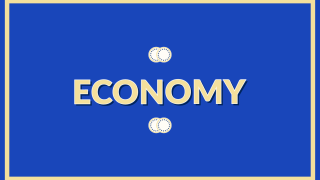All the evaluations of the problems of the Mexican economy usually include: lack of credit, industrial plant competitiveness and the competition from (mostly Chinese) imports. Each of these symptoms possesses its own dynamic and structure of causality; what the three have in common is that, at heart, it’s the same problem.
First off, credit. A permanent perennial complaint of business, and not a few politicians, is that referring to the Mexican economy’s relatively low level of banking penetration and, above all, the participation of credit as a percentage of the GDP. Participation of the Mexican banking system in the economy is less than in other similar economies but there are reasons that explain the difference. In Brazil, the total credit amount given to persons and businesses represented approximately 60% of the GDP in 2012, compared with 27% in Mexico. Of this 60% in Brazil, the BNDES development bank represented 21% of the GDP, that is, one third of the total credit. Taken as a whole, everything would indicate that one explanation of Mexico’s growth problems derives from the absence of credit.
More careful analysis reveals transcendent factors. On the one hand, in contrast with private banks, BNDES has taken enormous credit risks and has assumed huge liabilities of private companies. Many analysts anticipate that much of its portfolio will end up on the list of bad debts. Time will tell. With this, the numbers that are indeed comparable are 49 vs. 27, that is, a difference of 22 percentage points, not few, and that perhaps is basically explained by the nineties’ banking crisis in Mexico, which generated a financial culture much less risk-tolerant than that which formerly existed. But there is another factor that is much more revealing: the issuance of credit to both large companies and consumers is similar to the Brazilian numbers. The great difference resides in the small and medium industrial sector, where credit is all but not extended in Mexico.
The productive plant’s low competitiveness is perhaps where the main problem of national industry resides. If one listens to the sector’s businessmen, the explanation alludes to a matter of credit, the absence of support and protection on the part of the government, the informal economy and smuggling, that is, the third factor. The credit issue is real but circular: there is no credit because companies are not competitive and they are not competitive because there is no credit. The banks affirm, rightly so from my perspective, that it is not possible to extend credit to enterprises lacking a viable and competitive investment project, one likely to make these companies successful in a globalized economy. The demand for protection in the form of subsidies and tariff and non-tariff barriers to trade (a demand ever more successful in this administration) confirms what the banks say: that these companies are trying to stay alive not through their ability to produce good products at fair prices that the market demands but rather by means of protection granted to them by the government with respect to their competitors. Increasing credit through Mexico’s development bank NAFINSA would not address this problem.
In its essence, the country’s industrial problem is a mismatch between theory and reality. Up to the eighties, the structure of the Mexican economy was not very distinct from that of the Brazilian one. The development model adopted after WWII was oriented toward promoting industrial growth by means of subsidies and protection from imports. The objective was to achieve the growth of a powerful local industry through import substitution. The model favored the producer over the consumer and ended up creating a negligibly competitive industry that typically produced high-priced, low-quality goods. In the eighties, the Mexican government opted for trade liberalization with the objective of heightening the competitiveness of the economy and, through that, improving the quality and price of the goods it produced, but above all facilitating a rapid growth in overall productivity that would translate into better and higher paying jobs.
Behind the decision to liberalize lies a well known principle among scholars of the economy: that of the comparative advantage. On one occasion, the mathematician Stanislaw Ulam asked the economists’ dean of his era, Paul Samuelson, whether there were an economic principle that was, concurrently, universal and not evidently true. Samuelson immediately responded with David Ricardo’s principle of the comparative advantage, developed in 1817. Under this principle, what’s important for an economy is not its absolute capacity and ability to produce goods, but its relative capacity and ability with respect to others.
Although a country produces many things, each economy is more efficient in the production of some goods than others. Under this premise, international commerce leads a country to specialize in some type of goods that it also will export, while it imports others in which it is less efficient, thus achieving a greater level of well-being. The principle is well established and there is no doubt of its functioning. The problem is how to apply it in an economy operating under the premise of the virtual inexistence of international trade, our case until the eighties.
According to the economic theory, on liberalizing the Mexican economy, the country would have specialized in a certain type of goods (such as electronics, automobiles, engines, aviation fruits and vegetables, meat, etc., that is, all of the sectors in which Mexico is brutally competitive as an exporter) and would have abandoned other sectors in which it does not possess comparative advantages and that only existed as the result of the protection and subsidy strategy of before. Some of this did occur, which explains the disappearance of many enterprises in sectors such as toys and textiles but, thanks to the persistence of direct and indirect protection mechanisms, many companies that normally would have had to transform themselves or perish are still functioning. A few benefit at the cost of a general lesser growth of the economy.
The country is facing a dilemma that has not been resolved since the moment trade was liberalized, nearly thirty years ago: entering full speed ahead toward the construction of a modern productive plant or persisting in the protection of one sector that, as such, has no future. It can persist, but the cost is growing and can be measured in the form of bad and poorly paid jobs, low levels of economic growth and, above all, minimally productive jobs that inevitably pay the poor salaries.






Comments